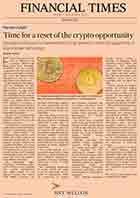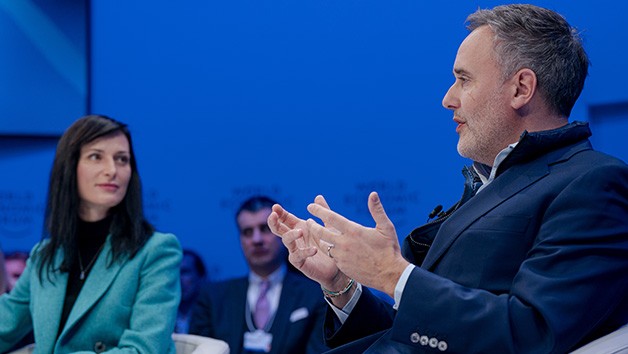Cryptocurrencies have dominated the headlines, but they are a small part of the world of digital assets. To fully realise the untapped potential of the emerging digital asset ecosystem, it is incumbent on leaders of the public and private sectors to work together to accelerate a smart regulatory framework that unites the traditional and digital asset systems, rooted in two fundamental principles.
The first is a recognition that regulation should enable the financial industry to prudently embrace innovations and new technologies.
Over the past two centuries, the world has seen many generations of financial technologies. Digital ledger representations of traditional assets such as cash, bonds and equities could be an important progression, as the original computer ledgers and real-time payments were from paper before them. This can lead to improvements in accuracy of record-keeping, easier handling of certain asset types such as real estate and loans and speedier, more efficient settlement.
The distributed ledger technology underlying cryptoassets can be used to underpin new market infrastructure that offers benefit to the financial system. The central bank digital currencies and tokenised bonds being explored by major jurisdictions are just a few examples of the efforts to harness the benefits of this new technology.
Just last month, the Federal Reserve Bank of New York and Monetary Authority of Singapore announced a joint effort to investigate how wholesale central bank digital currencies can improve the efficiency of cross-border wholesale payments involving multiple currencies. Exploration and innovation around digital ledger technology should thus be encouraged, not punished, in future regulatory frameworks.
The second principle is to maintain the basic tenets of client protection, orderly markets and clear regulatory guidelines — regardless of the new technology, asset class or type of entity servicing it.
Our established frameworks for market health and safety in the US were borne out of a series of depressions. While the progression of banking and securities regulation has not always been linear, it has remained rooted in these tenets. Digital assets operating outside those principles risk undermining the broader financial system.
The fallout from co-mingled client assets, poor disclosure and missing internal controls should remind us that while the cast of characters and products may change, the script of financial market disorder remains painfully familiar.
Although the technology has evolved, certain established concepts should apply to all market participants and assets regardless of their technological wrapper. These include good governance, client asset segregation, clear record-keeping, security and technology standards, capital and liquidity requirements, limits on extreme leverage, anti-money laundering protections, strong risk management and regulatory guardrails.
Today, banking institutions already operate within a perimeter of regulation. While conferring both privileges and obligations, this perimeter breathes what is arguably the most important currency into the global financial system: trust. Investor and public-sector confidence derive from the knowledge that the game has rules.
Without trust in our financial system, we will have nothing useful. Worse still, without the resulting confidence in the system, we may suppress the opportunity to embrace an exciting technology that could help move the industry forward.
With a majority of institutional investors interested in tokenisation, distributed ledger technology may represent the next financial frontier. Certain elements of the digital asset space have conflated disruptive innovation with generally disruptive behaviour, but they should not be allowed to spoil the opportunity for everyone else.
A comprehensive regulatory framework is needed, but much of the underpinning already exists and can be extended from the regulation of traditional assets.
There is a path to be found. We should embrace digital asset innovation, and align it to established rules and measured regulatory principles in order to protect customers and promote resiliency. In so doing, we also protect the most precious asset of all — confidence in our financial system.









